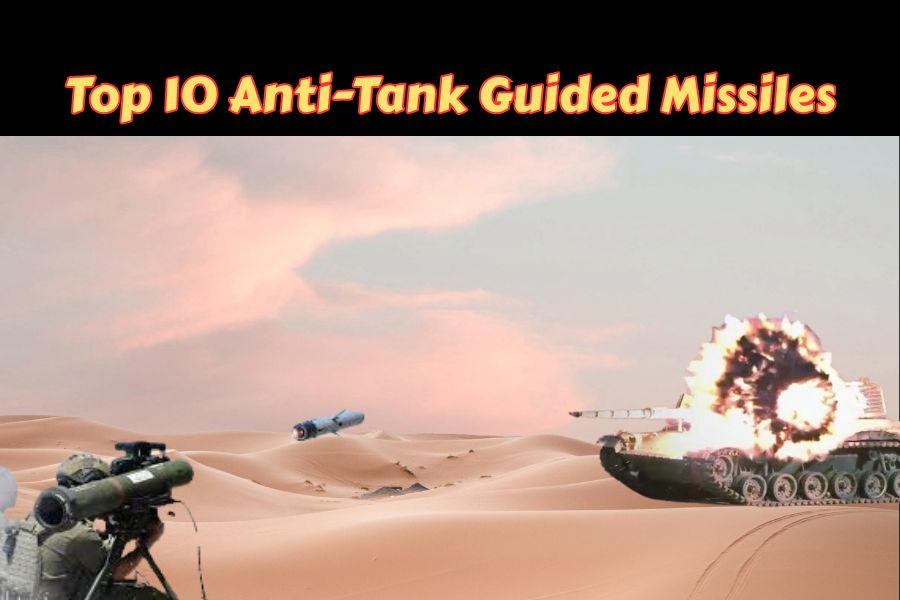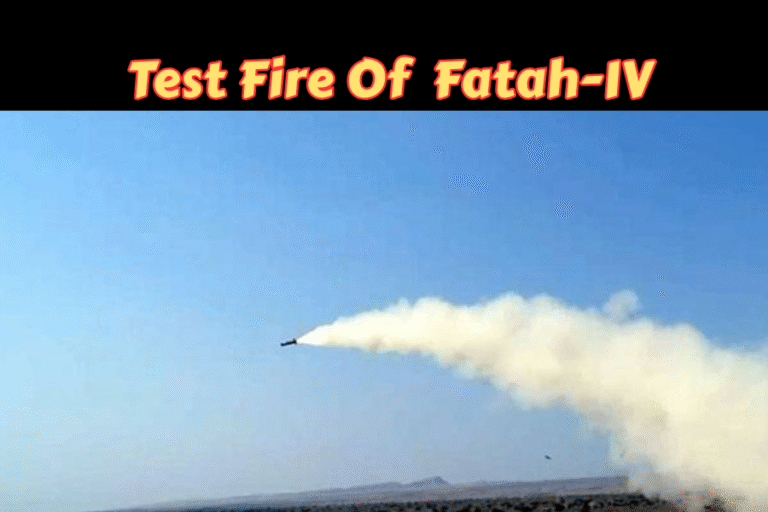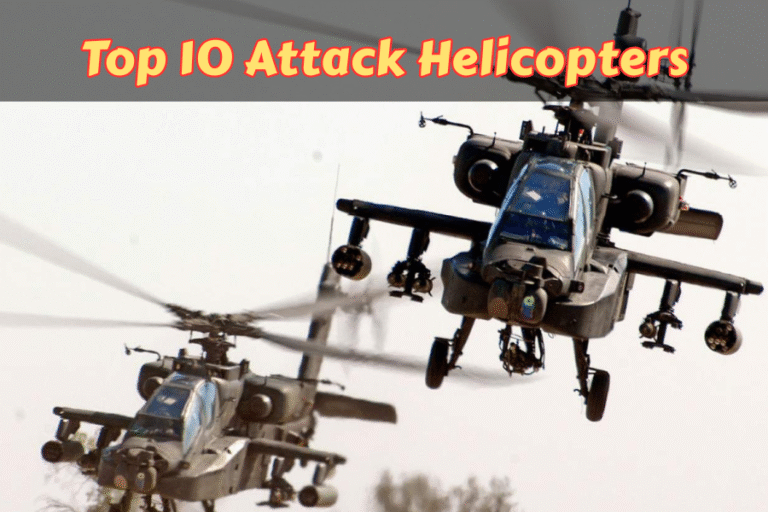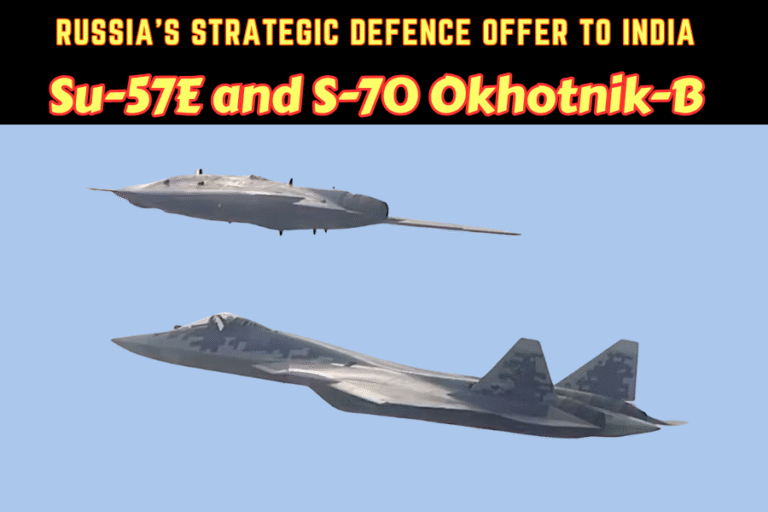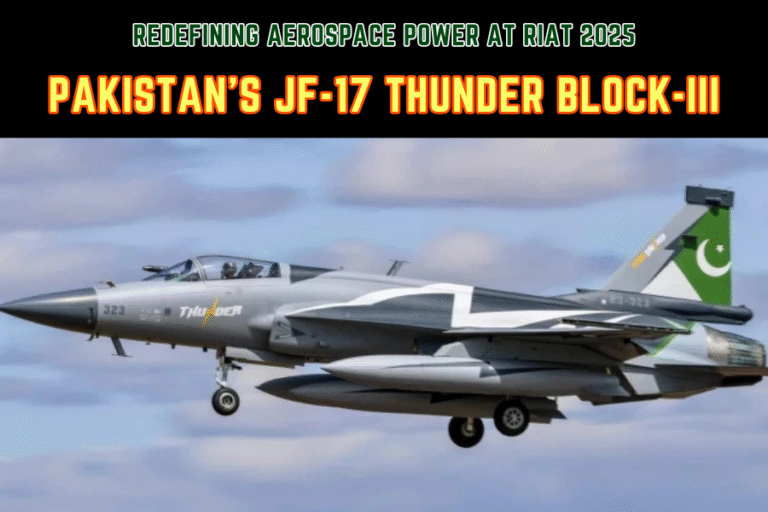(By Khalid Masood)
In modern warfare, anti-tank guided missiles (ATGMs) are pivotal for neutralising armoured threats with precision and lethality. These systems have evolved from wire-guided munitions to advanced fire-and-forget platforms, offering armed forces the ability to penetrate sophisticated tank armour. Moreover, they incorporate cutting-edge guidance technologies like laser and infrared homing, ensuring high accuracy. As we assess 2025, the top 10 anti-tank guided missiles of the world showcase innovations in range, warhead design, and versatility. For instance, many feature tandem warheads to defeat reactive armour. Additionally, nations prioritise portability and multi-platform compatibility. However, challenges like high costs and countermeasure vulnerabilities persist. This article explores each missile’s history, specifications, operators, pros, and cons, based on extensive research. Furthermore, it answers queries like “what are the best ATGMs in 2025?” or “which missiles counter modern tanks?” Sourcing from defence analyses and reports, we provide comprehensive insights. Therefore, readers gain a clear understanding of these critical weapons.
ATGMs are designed to destroy tanks, armoured vehicles, and fortifications with precision. They employ guidance systems like semi-automatic command to line of sight (SACLOS) or infrared. Additionally, global militaries operate thousands of launchers, with the United States leading in advanced systems like the Javelin. Meanwhile, Russia excels in versatile designs like the Kornet. However, emerging nations like Iran develop innovative alternatives. Consequently, the top 10 anti-tank guided missiles of the world reflect diverse technological approaches. Armed forces in Europe, Asia, and the Middle East rely on them for anti-armour roles. For example, recent conflicts demonstrate their effectiveness against modern tanks. Overall, these missiles redefine ground combat. As threats evolve, upgrades enhance their impact. Thus, this list highlights the leading ATGMs in 2025.
The evolution of ATGMs began in the 1950s with first-generation wire-guided systems. Modern variants incorporate fifth-generation technologies, including fire-and-forget capabilities. Moreover, lightweight materials improve portability. Reports indicate the ATGM market exceeds £3 billion annually. The Javelin dominates Western arsenals, while the Spike leads in versatility. However, systems like the Almas push boundaries with advanced guidance. Consequently, innovation drives adoption. Forces use ATGMs for both offensive and defensive operations. For instance, in Ukraine, they halted armoured advances. Overall, these weapons are indispensable. As 2025 introduces drone-compatible ATGMs, their role expands. Thus, the top 10 anti-tank guided missiles of the world embody precision and power.
1. FGM-148 Javelin: Leading the Top 10 Anti-Tank Guided Missiles of the World
The FGM-148 Javelin emerged in the 1980s to replace the M47 Dragon. The US Army sought a portable, fire-and-forget system. Moreover, Raytheon and Lockheed Martin developed it. The first tests occurred in 1994. Additionally, it entered service in 1996. The Javelin saw extensive use in Iraq in 2003. However, its prominence grew in Ukraine in 2022, destroying Russian tanks. This led to increased production. Furthermore, it features infrared guidance. Overall, it represents American innovation.
Specifications include a 127 mm calibre missile. The range reaches 2.5 km, with upgrades to 4 km. Moreover, it weighs 22.3 kg with the launcher. The warhead is a tandem HEAT, penetrating 750 mm RHA. Additionally, it uses infrared imaging for fire-and-forget. The missile travels at 140 m/s. Furthermore, it supports top-attack mode. Overall, it offers precision targeting.
Operators include the United States with over 5,000 launchers. The United Kingdom has 850 units. Moreover, Ukraine operates 1,200 for defence. Australia deploys 92. Poland uses 79. Additionally, Taiwan has 360. The system equips over 20 countries in 2025. However, some seek upgrades. Overall, it serves NATO and allies.
Pros feature fire-and-forget for user safety. The top-attack defeats most armour. Moreover, it is portable for infantry. The system operates in all weather. Additionally, Ukraine success proves effectiveness. This enhances morale. Furthermore, it integrates with networks. Overall, it excels in anti-tank roles.
Cons involve high cost of £140,000 per missile. The range is limited compared to others. Moreover, it requires training. Vulnerability to advanced countermeasures exists. Additionally, the weight burdens soldiers. This affects mobility. However, pros outweigh cons. Overall, it demands logistics.
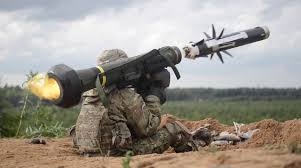
2. Spike MR/LR/ER: Versatile in the Top 10 Anti-Tank Guided Missiles of the World
The Spike family originated in the 1980s by Rafael Advanced Defense Systems. Israel needed a multi-range ATGM. Moreover, development began in 1987. The first tests occurred in 1997. Additionally, it entered service in 1998. The Spike saw action in Lebanon in 2006. However, upgrades to LR2 in 2018 enhanced range. This led to global exports. Furthermore, it features electro-optical guidance. Overall, it embodies Israeli versatility.
Specifications include a 130 mm calibre missile. The range varies: MR at 2.5 km, LR at 5.5 km, ER at 8 km. Moreover, it weighs 34 kg with the launcher. The warhead is a tandem HEAT, penetrating 900 mm RHA. Additionally, it uses fibre-optic guidance for MR/LR. The missile supports fire-and-forget. Furthermore, it offers top-attack. Overall, it provides flexibility.
Operators include Israel with 2,000 launchers. Germany has 1,500 LR units. Moreover, Poland operates 2,675. India deploys 5,000. Spain uses 2,400. Additionally, the Netherlands has 2,400. The system equips over 30 countries in 2025. However, some adopt LR2. Overall, it serves Europe and Asia.
Pros feature multi-range options for missions. The fibre-optic guidance ensures precision. Moreover, it supports man-in-the-loop targeting. The system is platform-agnostic, used on vehicles and helicopters. Additionally, top-attack defeats armour. This enhances lethality. Furthermore, exports prove reliability. Overall, it excels in diverse roles.
Cons involve high cost of £100,000 per missile. The fibre-optic cable limits some variants. Moreover, it requires skilled operators. Vulnerability to electronic warfare persists. Additionally, the weight affects infantry. This slows deployment. However, upgrades mitigate issues. Overall, it demands training.
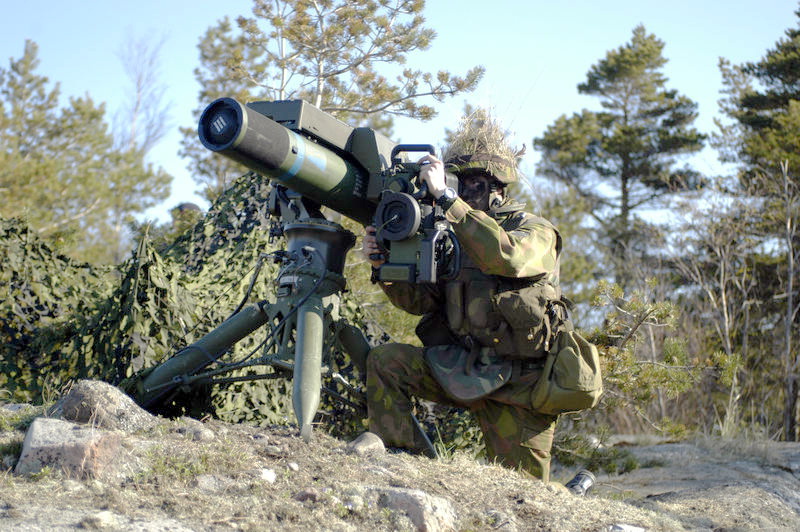
3. 9M133 Kornet: Robust in the Top 10 Anti-Tank Guided Missiles of the World
The 9M133 Kornet, NATO code AT-14 Spriggan, emerged in the 1990s to counter Western tanks. Russia needed a laser-guided system. Moreover, KBP Instrument Design Bureau developed it. The first tests occurred in 1994. Additionally, it entered service in 1998. The Kornet saw action in Syria in 2015. However, the Kornet-EM in 2011 extended range. This boosted exports. Furthermore, it features SACLOS guidance. Overall, it represents Russian resilience.
Specifications include a 152 mm calibre missile. The range reaches 5.5 km, with EM at 10 km. Moreover, it weighs 33.5 kg with the launcher. The warhead is a tandem HEAT, penetrating 1,200 mm RHA. Additionally, it uses laser beam-riding guidance. The missile travels at 250 m/s. Furthermore, it supports thermobaric warheads. Overall, it offers deep penetration.
Operators include Russia with over 3,000 launchers. Syria has 1,000 for war. Moreover, Iran operates 500. Algeria deploys 3,000. India uses 250. Additionally, Iraq has 1,000. The system equips over 20 countries in 2025. However, sanctions limit Russia. Overall, it serves Middle East and Asia.
Pros feature high penetration for modern tanks. The long range supports stand-off. Moreover, it mounts on vehicles. The system operates in harsh conditions. Additionally, thermobaric options destroy fortifications. This enhances versatility. Furthermore, Syria success proves impact. Overall, it excels in armour defeat.
Cons involve laser guidance requiring line-of-sight. The cost is £50,000 per missile. Moreover, it is vulnerable to smoke screens. Crew exposure during launch persists. Additionally, the weight limits infantry. This affects mobility. However, EM variants improve. Overall, it demands cover.
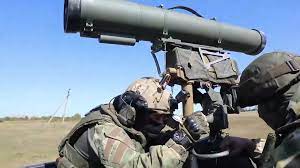
4. AGM-114R Hellfire II: Aerial in the Top 10 Anti-Tank Guided Missiles of the World
The AGM-114R Hellfire II evolved from the 1970s Hellfire series. The US Army needed a helicopter-launched ATGM. Moreover, Lockheed Martin developed it. The first tests occurred in 1989. Additionally, it entered service in 1998. The Hellfire II saw action in Iraq in 2003. However, the Romeo variant in 2012 improved versatility. This led to widespread use. Furthermore, it features laser guidance. Overall, it embodies aerial precision.
Specifications include a 178 mm calibre missile. The range reaches 8 km. Moreover, it weighs 49.4 kg. The warhead is a multi-purpose HEAT, penetrating 800 mm RHA. Additionally, it uses semi-active laser homing. The missile travels at 425 m/s. Furthermore, it supports lock-on-after-launch. Overall, it offers platform versatility.
Operators include the United States with over 10,000 missiles. The United Kingdom has 2,000. Moreover, South Korea operates 1,500. Saudi Arabia deploys 3,000. Australia uses 500. Additionally, France has 1,000. The system equips over 20 countries in 2025. However, some upgrade to Romeo. Overall, it serves NATO and allies.
Pros feature long range for air platforms. The laser guidance ensures accuracy. Moreover, it mounts on drones and helicopters. The system supports multiple warheads. Additionally, rapid speed reduces evasion. This enhances lethality. Furthermore, Iraq success proves reliability. Overall, it excels in air-ground roles.
Cons involve high cost of £90,000 per missile. The laser requires designation. Moreover, it is less portable for infantry. Vulnerability to countermeasures persists. Additionally, platform dependence limits use. This affects flexibility. However, upgrades improve targeting. Overall, it demands air support.
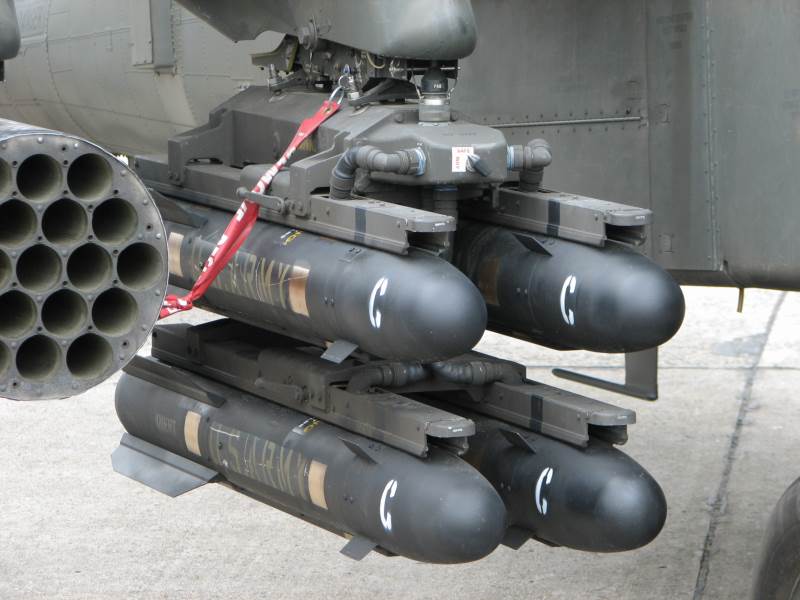
5. HJ-12 Red Arrow 12: Chinese in the Top 10 Anti-Tank Guided Missiles of the World
The HJ-12 Red Arrow 12 emerged in the 2010s as a Javelin rival. China needed a fire-and-forget ATGM. Moreover, NORINCO developed it. The first tests occurred in 2014. Additionally, it entered service in 2016. The HJ-12 saw limited use in exercises. However, exports in 2025 increased visibility. This led to adoption. Furthermore, it features infrared guidance. Overall, it represents Chinese innovation.
Specifications include a 135 mm calibre missile. The range reaches 4 km. Moreover, it weighs 22 kg with the launcher. The warhead is a tandem HEAT, penetrating 1,100 mm RHA. Additionally, it uses infrared imaging for fire-and-forget. The missile travels at 150 m/s. Furthermore, it supports top-attack. Overall, it offers affordability.
Operators include China with over 2,000 launchers. Algeria has 200 for defence. Moreover, Pakistan operates 150. Nigeria deploys 100. Iraq uses 50. Additionally, exports grow in 2025. The system equips 5 countries. However, mainly Chinese allies. Overall, it serves Asia and Africa.
Pros feature fire-and-forget for safety. The top-attack defeats armour. Moreover, it is lightweight for infantry. The system is cost-effective at £40,000. Additionally, it operates in all weather. This enhances use. Furthermore, exercises prove reliability. Overall, it excels in portability.
Cons involve shorter range than competitors. The guidance is less advanced. Moreover, it requires training for accuracy. Vulnerability to jamming persists. Additionally, limited combat use. This affects reputation. However, exports expand reach. Overall, it demands testing.
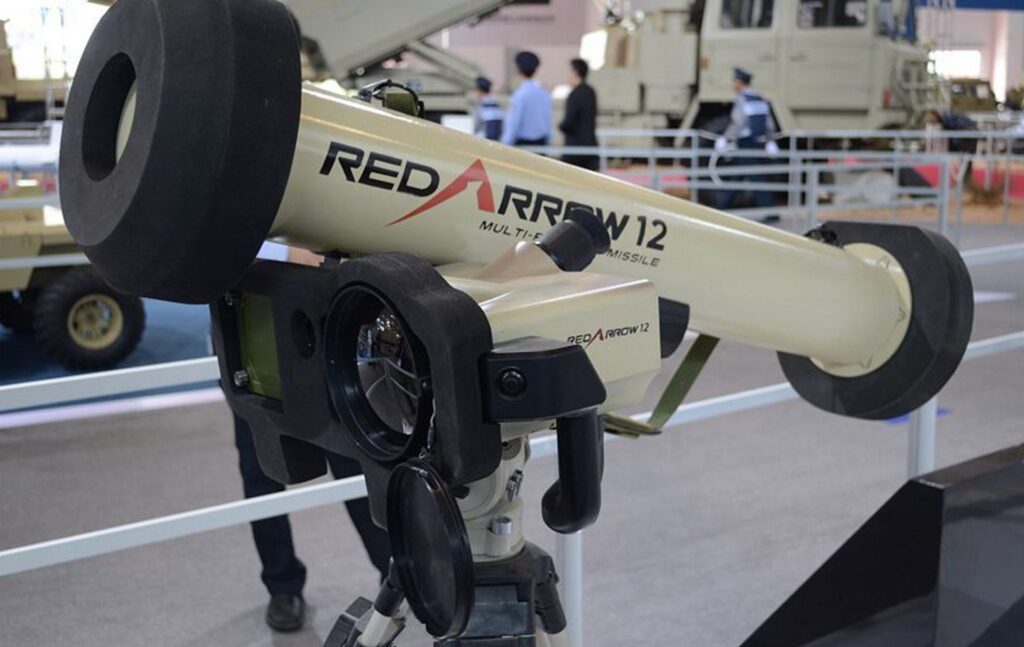
6. Akeron MP (MMP): French in the Top 10 Anti-Tank Guided Missiles of the World
The Akeron MP, formerly MMP, emerged in the 2010s to replace the Milan. France needed a modern ATGM. Moreover, MBDA developed it. The first tests occurred in 2014. Additionally, it entered service in 2017. The Akeron saw use in Mali in 2019. However, upgrades in 2025 improved guidance. This led to exports. Furthermore, it features dual-band seekers. Overall, it represents European precision.
Specifications include a 140 mm calibre missile. The range reaches 5 km. Moreover, it weighs 15 kg with the launcher. The warhead is a tandem HEAT, penetrating 1,000 mm RHA. Additionally, it uses infrared and TV seekers. The missile supports man-in-the-loop. Furthermore, it offers top-attack. Overall, it provides versatility.
Operators include France with 400 launchers. Egypt has 200 for defence. Moreover, India evaluates 500 units. Qatar deploys 100. Belgium uses 60. Additionally, exports grow in 2025. The system equips 5 countries. However, adoption is slow. Overall, it serves Europe and allies.
Pros feature lightweight design for infantry. The dual seekers ensure accuracy. Moreover, it supports man-in-the-loop targeting. The system operates in urban settings. Additionally, top-attack defeats tanks. This enhances lethality. Furthermore, Mali success proves impact. Overall, it excels in flexibility.
Cons involve high cost of £80,000 per missile. The range is moderate. Moreover, it requires skilled operators. Vulnerability to electronic warfare exists. Additionally, limited combat data. This affects reputation. However, upgrades improve seekers. Overall, it demands training.
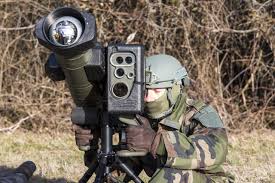
7. Milan ADT-ER: European in the Top 10 Anti-Tank Guided Missiles of the World
The Milan ADT-ER evolved from the 1970s Milan series. Europe needed an upgraded wire-guided system. Moreover, MBDA developed it. The first tests occurred in 2006. Additionally, it entered service in 2011. The Milan saw action in Afghanistan in 2009. However, the ADT-ER in 2025 extended range. This maintained relevance. Furthermore, it features wire guidance. Overall, it embodies European reliability.
Specifications include a 125 mm calibre missile. The range reaches 3 km, with ER at 6 km. Moreover, it weighs 13 kg with the launcher. The warhead is a tandem HEAT, penetrating 1,000 mm RHA. Additionally, it uses SACLOS wire guidance. The missile travels at 200 m/s. Furthermore, it supports direct attack. Overall, it offers simplicity.
Operators include France with 1,000 launchers. India has 4,100 units. Moreover, Syria operates 1,000. Iraq deploys 500. Greece uses 1,200. Additionally, over 40 countries use Milan variants in 2025. However, some phase out for ADT-ER. Overall, it serves global forces.
Pros feature lightweight design for portability. The wire guidance is reliable. Moreover, it is cost-effective at £30,000. The system suits infantry. Additionally, wide adoption ensures support. This enhances use. Furthermore, Afghanistan success proves impact. Overall, it excels in affordability.
Cons involve wire guidance limiting range. The direct attack is less effective. Moreover, it requires line-of-sight. Vulnerability to smoke persists. Additionally, older systems lack fire-and-forget. This affects safety. However, ER upgrades help. Overall, it demands clear terrain.
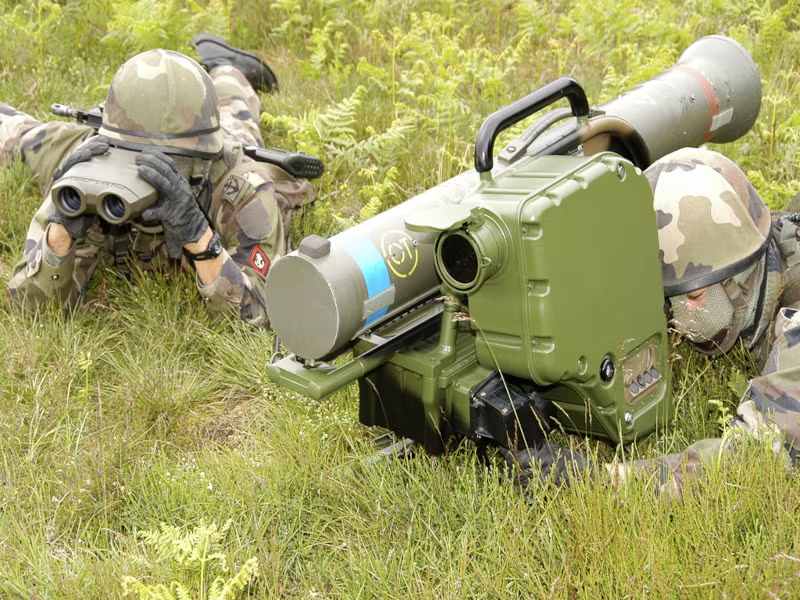
8. BGM-71 TOW: American in the Top 10 Anti-Tank Guided Missiles of the World
The BGM-71 TOW originated in the 1960s to counter Soviet tanks. The US Army needed a heavy ATGM. Moreover, Hughes Aircraft developed it. The first tests occurred in 1968. Additionally, it entered service in 1970. The TOW saw action in Vietnam in 1972. However, upgrades to TOW 2B in 2020 improved guidance. This sustained use. Furthermore, it features wire and radio guidance. Overall, it represents American endurance.
Specifications include a 152 mm calibre missile. The range reaches 4.2 km. Moreover, it weighs 28.1 kg with the launcher. The warhead is a tandem HEAT, penetrating 900 mm RHA. Additionally, it uses SACLOS wire or radio. The missile travels at 278 m/s. Furthermore, it supports top-attack in 2B. Overall, it offers reliability.
Operators include the United States with over 10,000 launchers. Saudi Arabia has 5,000. Moreover, Turkey operates 3,000. Egypt deploys 2,000. Israel uses 1,500. Additionally, over 40 countries use TOW in 2025. However, some adopt 2B. Overall, it serves global allies.
Pros feature wide adoption for logistics. The top-attack defeats armour. Moreover, it mounts on vehicles and helicopters. The system is battle-proven. Additionally, cost is £40,000 per missile. This enhances affordability. Furthermore, Vietnam success proves impact. Overall, it excels in versatility.
Cons involve wire guidance limiting range. The line-of-sight requirement risks exposure. Moreover, it is vulnerable to countermeasures. Weight affects infantry. Additionally, older variants lack fire-and-forget. This reduces safety. However, 2B upgrades help. Overall, it demands cover.
Notable uses include the 1972 Vietnam War for tank kills. It targeted T-55s. Moreover, the 2014 Syria conflict hit armour. The system supported rebels. Additionally, Iraq used it against ISIS. The force neutralised threats. However, some were countered. This exposed risks. Furthermore, exercises show reliability. Overall, it impacts battles.
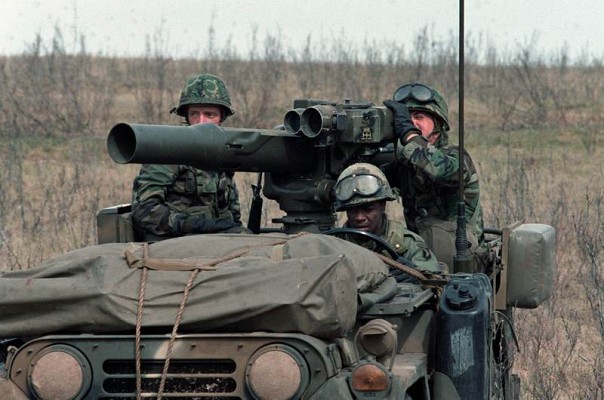
9. Almas: Iranian in the Top 10 Anti-Tank Guided Missiles of the World
The Almas missile, developed by Iran’s Ministry of Defence, emerged in the 2010s as a response to Western ATGMs. Iran sought a versatile, non-line-of-sight (NLOS) system. Moreover, the project began around 2016, inspired by the Israeli Spike. The first tests occurred in 2020. Additionally, it entered service in 2021. The Almas saw use in Iranian exercises in 2023. However, the Almas-4 variant in 2025 extended range, enhancing its profile. This led to increased interest among Iran’s allies. Furthermore, it features electro-optical guidance. Overall, it represents Iranian ingenuity.
Specifications include a 130 mm calibre missile. The range reaches 8 km for Almas-4, with earlier variants at 4 km. Moreover, it weighs approximately 15 kg with the launcher. The warhead is a tandem HEAT, penetrating 900 mm RHA. Additionally, it uses fibre-optic and infrared guidance for NLOS capability. The missile supports fire-and-forget and top-attack modes. Furthermore, it can be launched from drones. Overall, it offers advanced targeting.
Operators include Iran with an estimated 1,000 launchers. Hezbollah deploys units in Lebanon. Moreover, Syria operates a limited number for conflict. Iraq evaluates the system for adoption. Additionally, no confirmed exports beyond allies in 2025. The system equips Iran’s Revolutionary Guard primarily. However, interest grows in the Middle East. Overall, it serves regional forces.
Pros feature NLOS capability for safe engagements. The top-attack defeats modern armour. Moreover, it is lightweight for infantry and drone use. The system supports multi-platform integration, including UAVs. Additionally, cost is estimated at £35,000 per missile, enhancing affordability. This supports production. Furthermore, exercises demonstrate precision. Overall, it excels in asymmetric warfare.
Cons involve limited combat experience, reducing proven reliability. The guidance system requires skilled operators. Moreover, it is vulnerable to advanced electronic countermeasures. Production capacity may limit exports. Additionally, reliance on fibre-optics restricts some scenarios. This affects flexibility. However, Almas-4 upgrades improve range. Overall, it demands further testing.
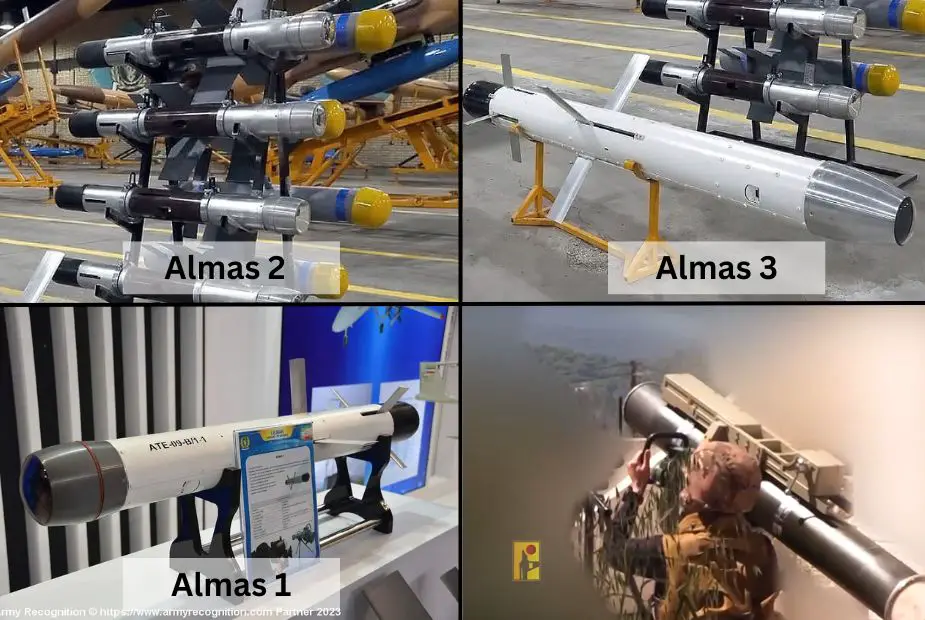
10. LAHAT: Israeli in the Top 10 Anti-Tank Guided Missiles of the World
The LAHAT missile emerged in the 1990s for tank gun compatibility. Israel needed a lightweight ATGM. Moreover, Israel Aerospace Industries developed it. The first tests occurred in 1998. Additionally, it entered service in 2000. The LAHAT saw use in Lebanon in 2006. However, upgrades in 2025 improved laser guidance. This maintained relevance. Furthermore, it features semi-active laser homing. Overall, it represents Israeli adaptability.
Specifications include a 105 mm calibre missile. The range reaches 8 km. Moreover, it weighs 13 kg. The warhead is a tandem HEAT, penetrating 800 mm RHA. Additionally, it uses laser designation. The missile travels at 300 m/s. Furthermore, it supports indirect fire. Overall, it offers tank integration.
Operators include Israel with 500 launchers. India has 200 for tanks. Moreover, Chile operates 100. No other confirmed users in 2025. The system equips Merkava tanks. Additionally, it supports helicopter platforms. However, adoption is limited. Overall, it serves Israel and allies.
Pros feature lightweight design for tanks. The long range supports stand-off. Moreover, it integrates with 105 mm guns. The system allows indirect fire. Additionally, cost is £30,000 per missile. This enhances affordability. Furthermore, Lebanon success proves impact. Overall, it excels in tank roles.
Cons involve laser designation requiring line-of-sight. The smaller warhead limits penetration. Moreover, it is platform-specific. Vulnerability to smoke persists. Additionally, limited global use. This affects logistics. However, upgrades improve accuracy. Overall, it demands designation.
v
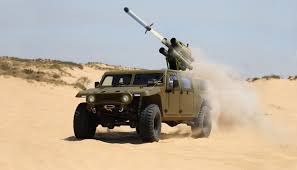
Conclusion: Summarising the Top 10 Anti-Tank Guided Missiles of the World
From the Javelin to the LAHAT, these top 10 anti-tank guided missiles of the world demonstrate the evolution of anti-armour technology. The inclusion of Iran’s Almas highlights regional innovation. In 2025, systems like the Spike lead in versatility, while the Kornet excels in penetration. Moreover, ATGMs adapt to modern threats with fire-and-forget and top-attack capabilities. However, challenges like high costs and countermeasures persist. Therefore, understanding the top 10 anti-tank guided missiles of the world reveals trends in precision warfare. As conflicts evolve, innovations in guidance and portability will shape their future. Additionally, global adoption grows with exports. The future holds drone integrations and enhanced countermeasures. Overall, these ATGMs remain vital for armed forces.

